Abstract
Apparatus was designed and constructed in which a bacterial aerosol of known age, particle size, and relative humidity (RH) could be exposed to ultraviolet (UV) radiation of measured intensity for a given period of time and then be sampled quantitatively. Aerosols of Serratia marcescens were exposed to UV dosages between 96.0 and 0.75 (μw-sec)/cm2 at humidities ranging from 25 to 90%. A sharp decline in the fraction of organisms killed was found at RH values above 60 to 70%. Above 80% RH, there was evidence for reactivation induced by UV. The plot of „log fraction organisms remaining” versus UV dose was curvilinear, suggesting noncompliance with the monomolecular law of reaction velocity, but the Bunsen-Roscoe law of reciprocity between time and intensity of UV exposure was demonstrated to hold. These results could be accounted for by postulating the presence in the aerosol of two populations of organisms with different sensitivities to UV, each individually obeying the monomolecular law of reaction velocity. The data amplify existing information on the relationship between UV disinfection of airborne organisms and RH. In the middle range of humidities, the sensitivity of the organisms to UV was greater than would be expected from published reports.
Full text
PDF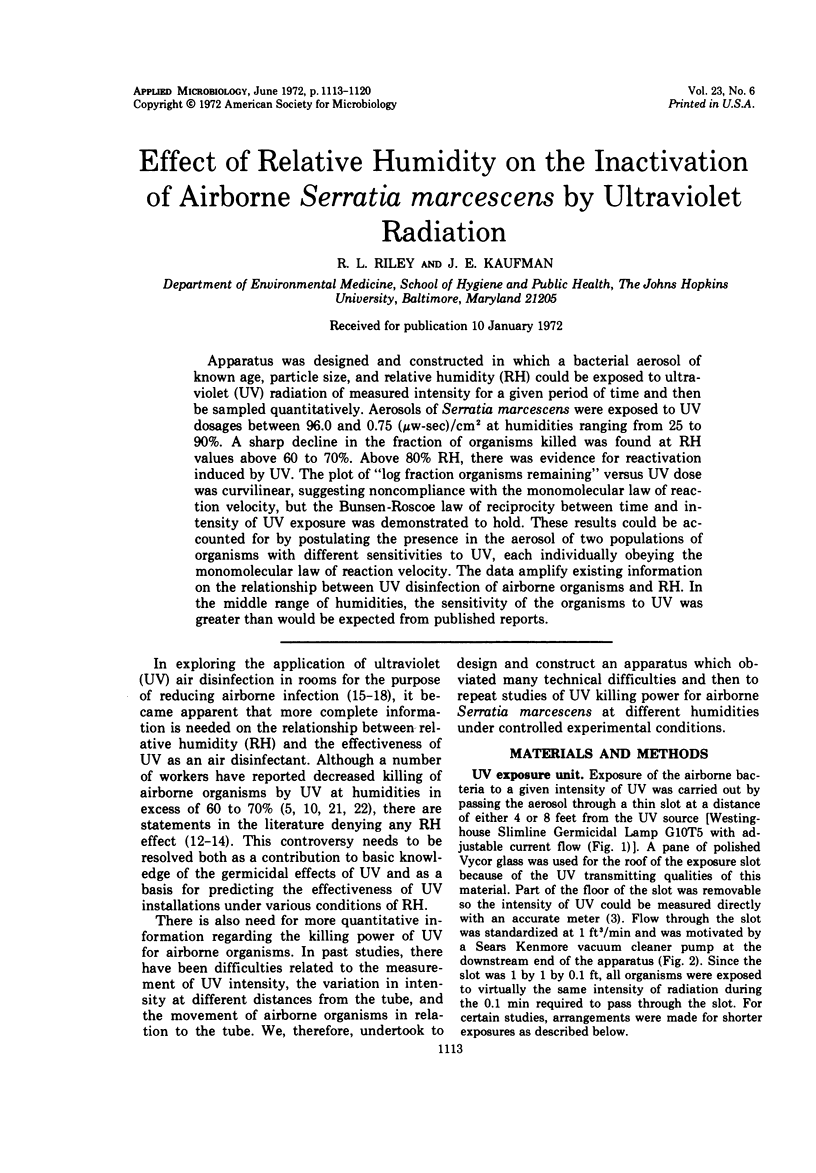
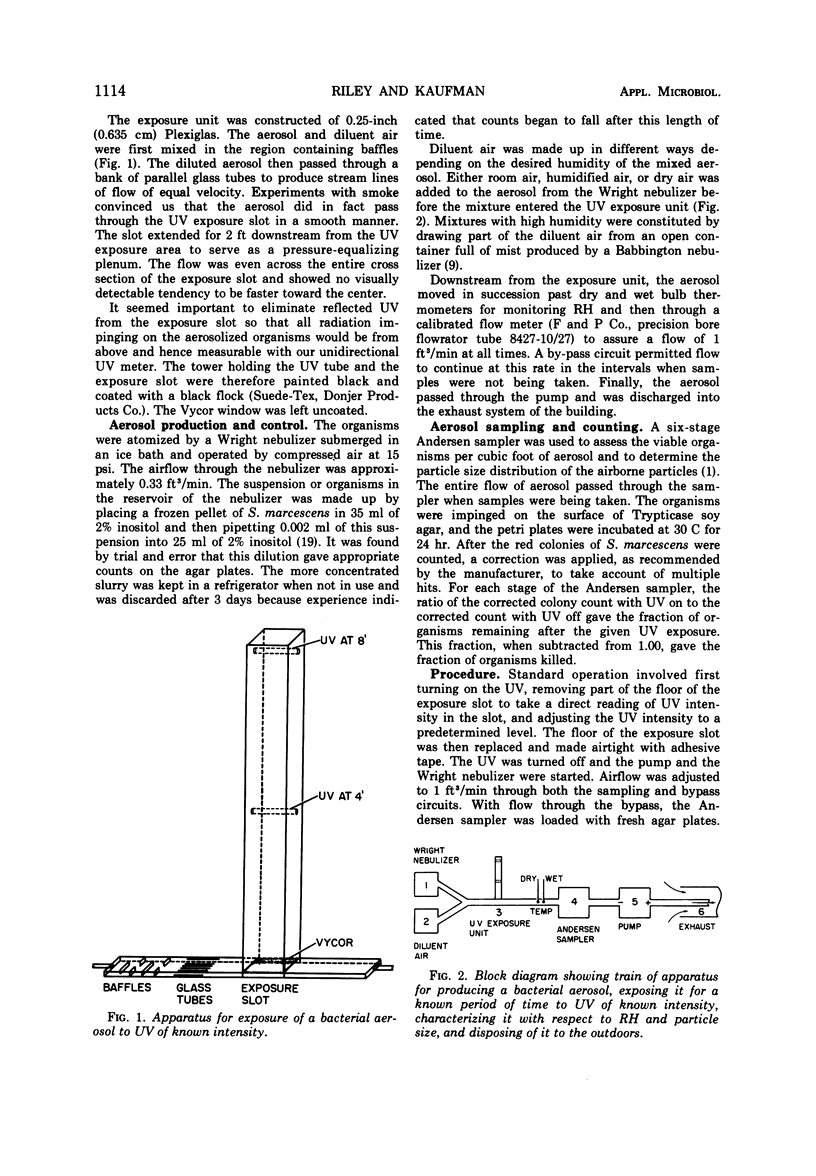
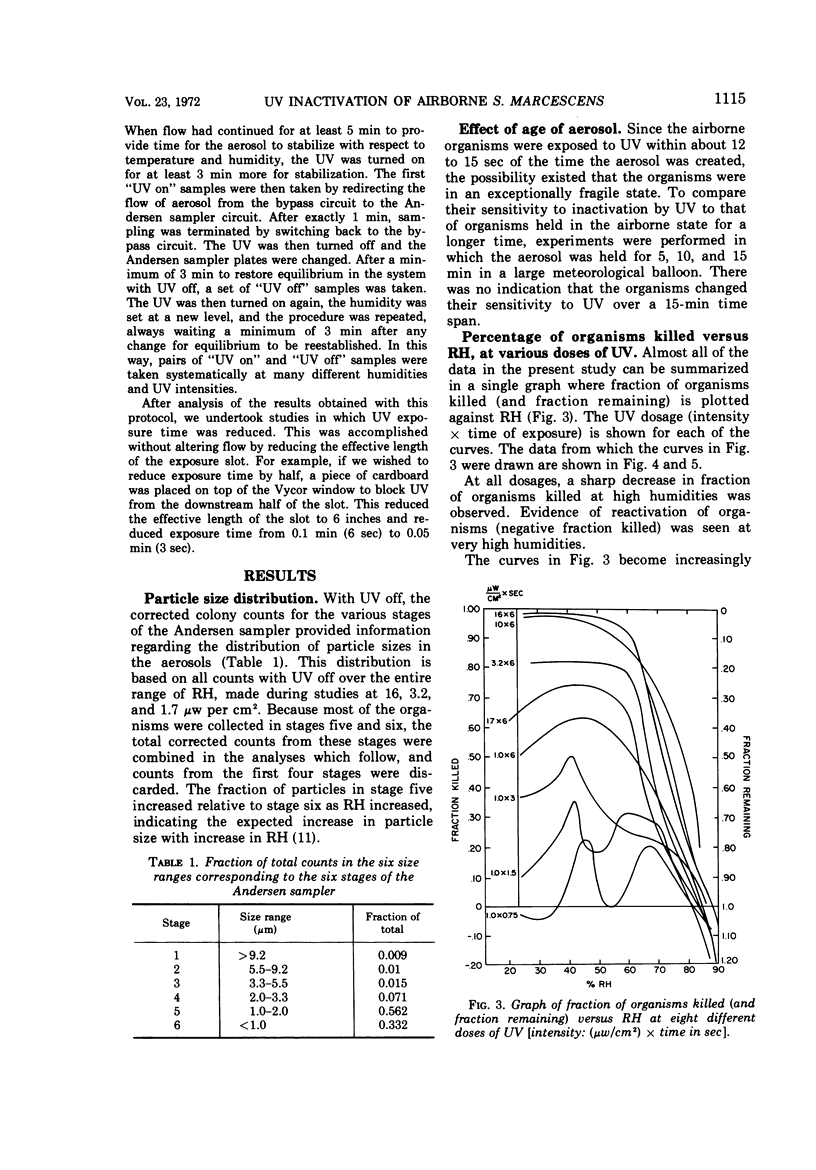
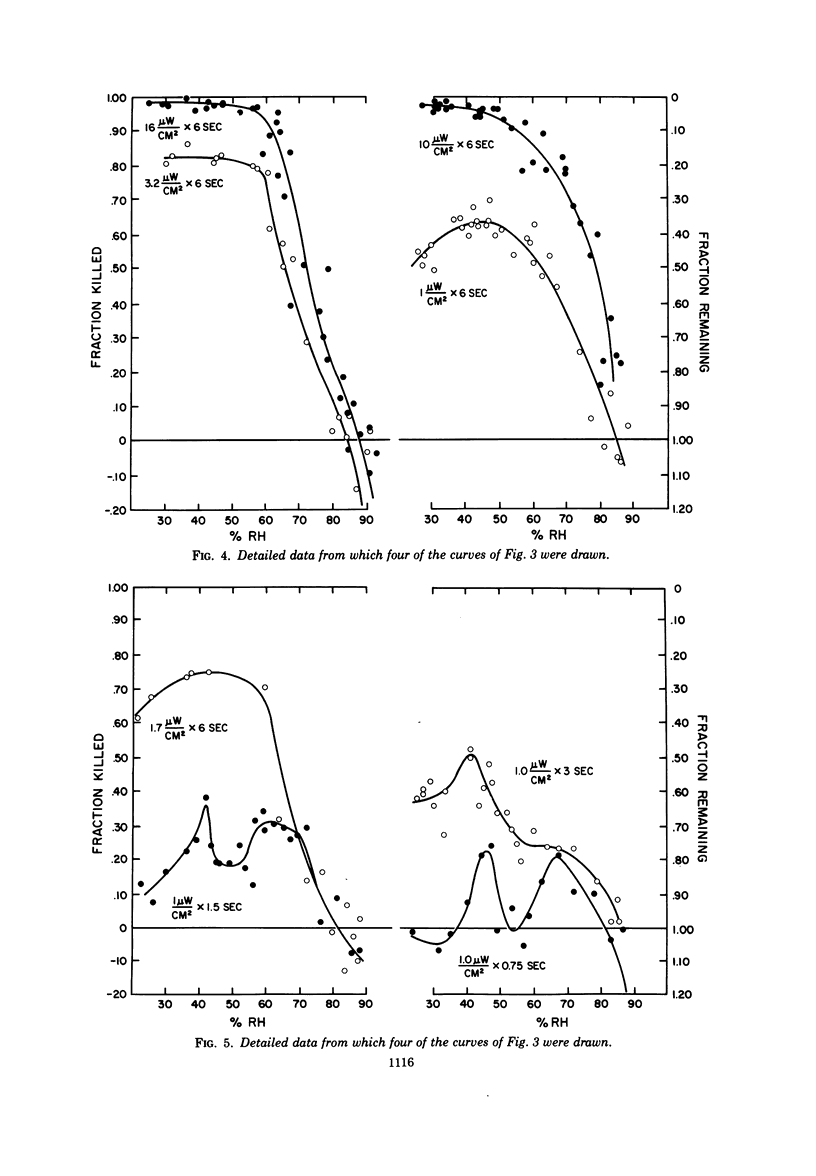
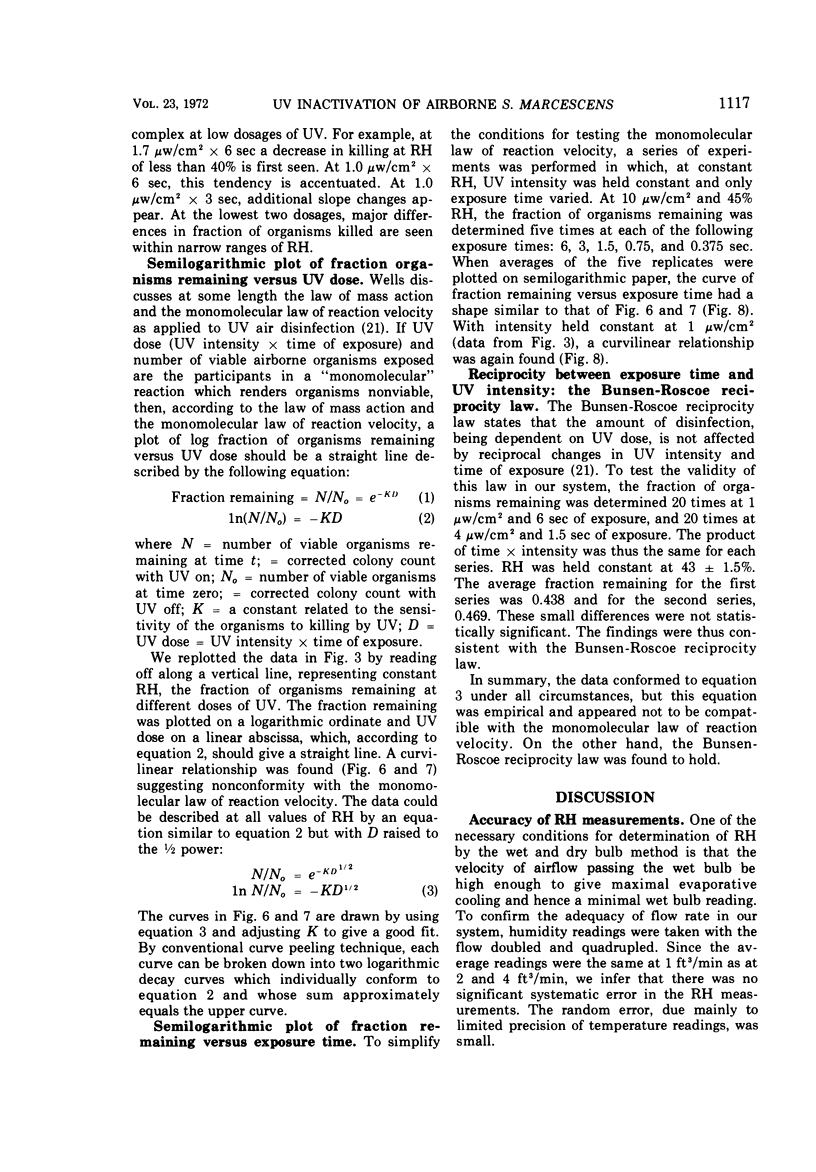
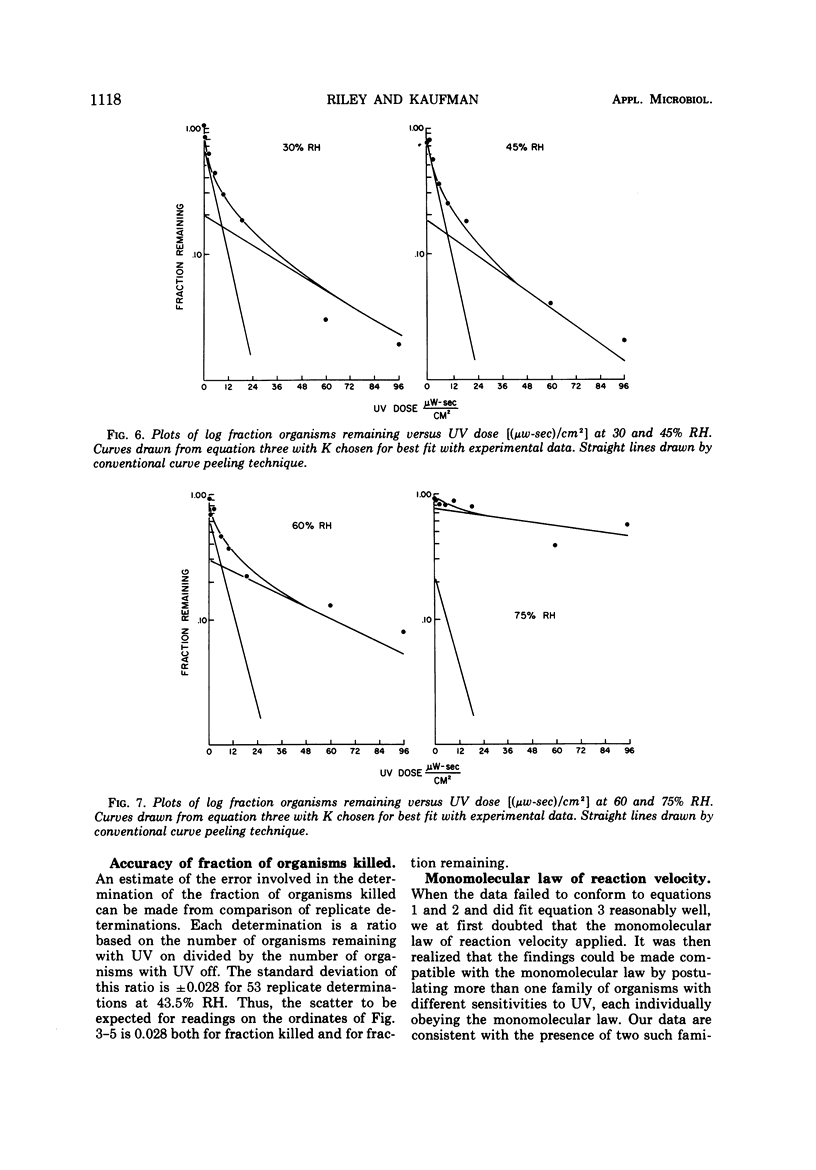
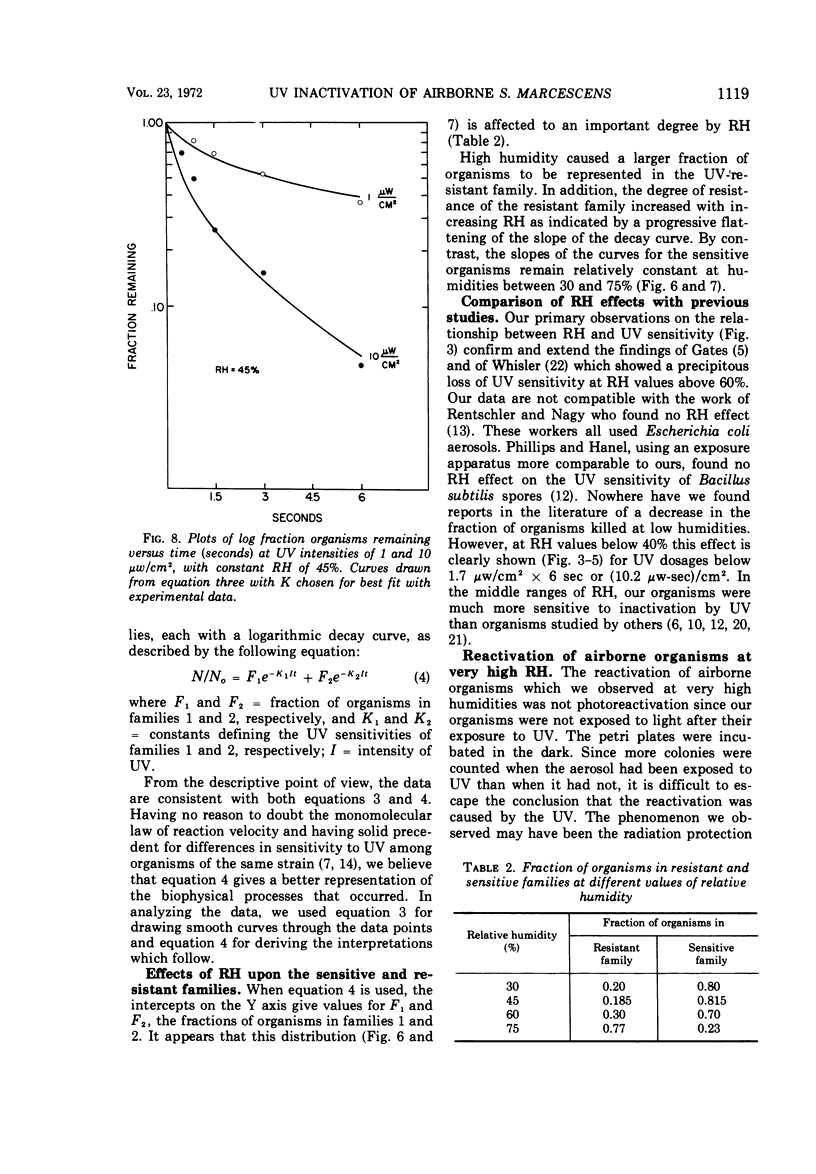
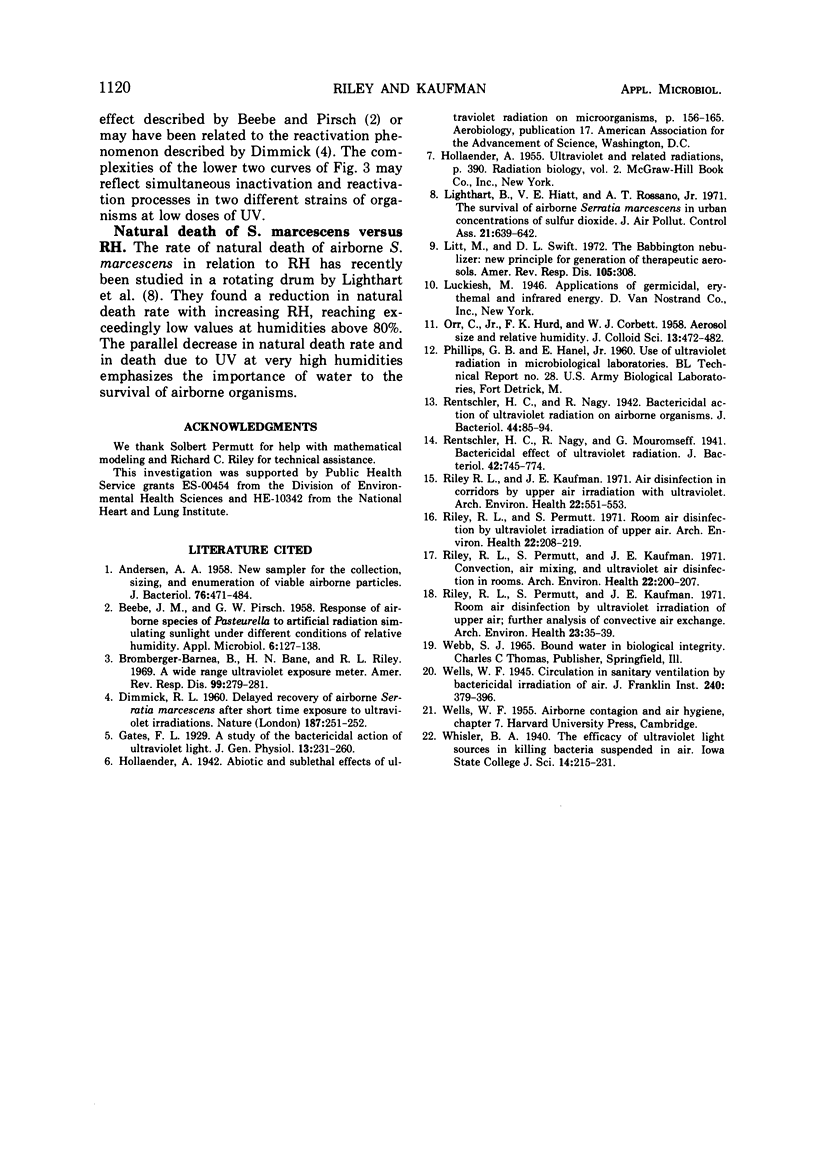
Selected References
These references are in PubMed. This may not be the complete list of references from this article.
- ANDERSEN A. A. New sampler for the collection, sizing, and enumeration of viable airborne particles. J Bacteriol. 1958 Nov;76(5):471–484. doi: 10.1128/jb.76.5.471-484.1958. [DOI] [PMC free article] [PubMed] [Google Scholar]
- BEEBE J. M., PIRSCH G. W. Response of air-borne species of Pasteurella to artificial radiation simulating sunlight under different conditions of relative humidity. Appl Microbiol. 1958 Mar;6(2):127–138. doi: 10.1128/am.6.2.127-138.1958. [DOI] [PMC free article] [PubMed] [Google Scholar]
- Bromberger-Barnea B., Bane H. N., Riley R. L. A wide-range ultraviolet exposure meter. Am Rev Respir Dis. 1969 Feb;99(2):279–281. doi: 10.1164/arrd.1969.99.2.279. [DOI] [PubMed] [Google Scholar]
- DIMMICK R. L. Delayed recovery of airborne Serratia marcescens after short-time exposure to ultra-violet irradiation. Nature. 1960 Jul 16;187:251–252. doi: 10.1038/187251a0. [DOI] [PubMed] [Google Scholar]
- Lighthart B., Hiatt V. E., Rossano A. T., Jr The survival of airborne Serratia marcescens in urban concentrations of sulfur dioxide. J Air Pollut Control Assoc. 1971 Oct;21(10):639–642. doi: 10.1080/00022470.1971.10469580. [DOI] [PubMed] [Google Scholar]
- Litt M., Swift D. E. The Babington nebulizer: a new principle for generation of therapeutic aerosols. Am Rev Respir Dis. 1972 Feb;105(2):308–310. doi: 10.1164/arrd.1972.105.2.308. [DOI] [PubMed] [Google Scholar]
- Rentschler H. C., Nagy R. Bactericidal Action of Ultraviolet Radiation on Air-Borne Organisms. J Bacteriol. 1942 Jul;44(1):85–94. doi: 10.1128/jb.44.1.85-94.1942. [DOI] [PMC free article] [PubMed] [Google Scholar]
- Rentschler H. C., Nagy R., Mouromseff G. Bactericidal Effect of Ultraviolet Radiation. J Bacteriol. 1941 Jun;41(6):745–774. doi: 10.1128/jb.41.6.745-774.1941. [DOI] [PMC free article] [PubMed] [Google Scholar]
- Riley R. L., Kaufman J. E. Air disinfection in corridors by upper air irradiation with ultraviolet. Arch Environ Health. 1971 May;22(5):551–553. doi: 10.1080/00039896.1971.10665899. [DOI] [PubMed] [Google Scholar]
- Riley R. L., Permutt S., Kaufman J. E. Convection, air mixing, and ultraviolet air disinfection in rooms. Arch Environ Health. 1971 Feb;22(2):200–207. doi: 10.1080/00039896.1971.10665833. [DOI] [PubMed] [Google Scholar]
- Riley R. L., Permutt S., Kaufman J. E. Room air disinfection by ultraviolet irradiation of upper air. Further analysis of convective air exchange. Arch Environ Health. 1971 Jul;23(1):35–39. doi: 10.1080/00039896.1971.10665951. [DOI] [PubMed] [Google Scholar]
- Riley R. L., Permutt S. Room air disinfection by ultraviolet irradiation of upper air. Air mixing and germicidal effectiveness. Arch Environ Health. 1971 Feb;22(2):208–219. doi: 10.1080/00039896.1971.10665834. [DOI] [PubMed] [Google Scholar]


